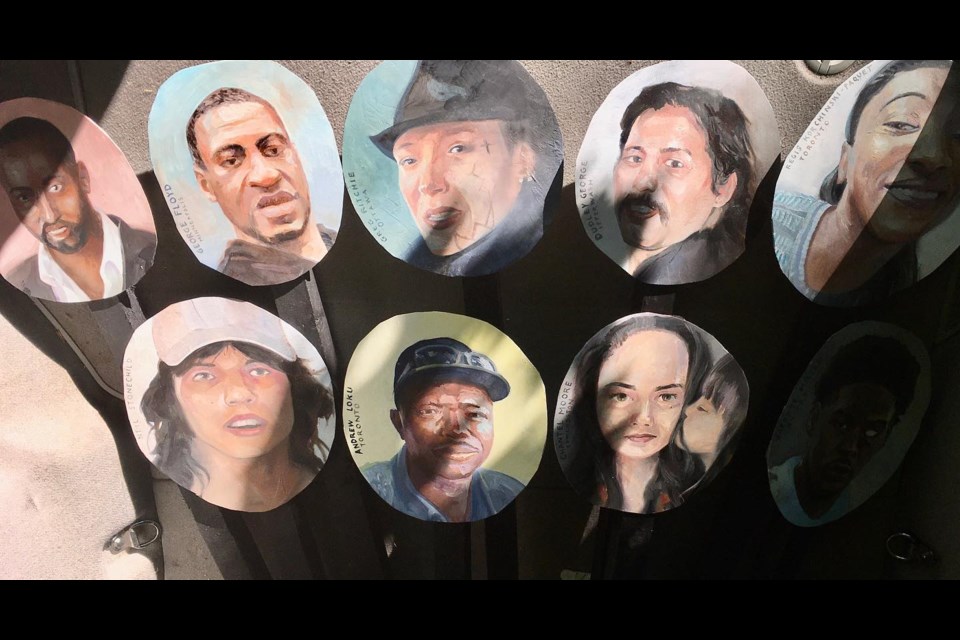CENTRE WELLINGTON – An Elora visual artist is creating conversation around race and policing with a portraits series featuring people killed and injured during police interactions.
Phil Irish’s Racism at Home series began as a reaction to seeing George Floyd’s death in the news.
“I had done some portraits of George Floyd just in my sketchbook and I got thinking about Canadian aspects of this story,” Irish said.
This turned into a series of nine portraits featuring mainly Canadians killed or gravely injured during police interactions.
Some of the faces featured are from incidents in previous years including: Dudley George, Abdirahman Abdi, Dafonte Miller, Greg Ritchie, Neil Stonechild and Andrew Loku.
Portraits of those who died this year are George Floyd, Chantel Moore and Regis Korchinski-Paquet.
With the exception of Floyd, all are Canadians but each is Black or Indigenous. Miller was not killed but lost an eye after he was beaten by an off-duty police officer.
Irish said part of how Canada’s role in this differs is the number of Indigenous people represented in this series.
“When you see the pattern across years, you realize that these people are at a greater risk and don’t get the same care,” Irish said. “It’s trying to point out something systemic. It’s not about ‘here's a bad cop.’”
Part of this series involves white people considering how they fit into this, including himself. That’s why Irish said he chose to install the portraits on his front lawn in Elora.
The portraits are put on stakes and displayed in the front lawn. While the stakes are a convenient way to bring the display to face-level, there’s imagery in this as well.
“The heads are lovingly painted but they’re also on spikes right?” Irish said. “It invokes a power thing about marking the edge of my property, it’s like a fence and it’s heads on stakes. There’s something aggressive about it.”
To spread the message, he began moving it to other locations. Right now, the series is at county councillor Diane Ballantyne’s house in Fergus where it will stay for a few weeks.
Irish hasn’t finalized where it’s going next but is interested in bringing it out of town or even the province to bring these portraits to where they were from such as Saskatoon where Stonechild was from.
Irish said he particularly enjoyed hearing conversations when it was at his house which he called an area with a lot of pedestrian traffic.
He said he was particularly moved when he saw a young child with their mother who explained the meaning to the child who couldn’t quite grasp what the written statement was saying.
“The mother explained it all so beautifully and at kid level,” Irish said. “As an artist, you often don’t get to see that direct conversation around the work.”
Another moment he enjoyed was when Greg Ritchie’s family reached out to him to tell him how much they liked the portrait and how much Ritchie would have loved it too.
Irish said this is the most direct and political piece he’s ever done. Part of the meaning of the project is taking time to spend time with the likeness of the deceased.
“How art slows you down is important,” Irish said. “The idea of taking time and slowing it down, slowing down the conversation. All of those things I think make for a richer discourse around it.”



